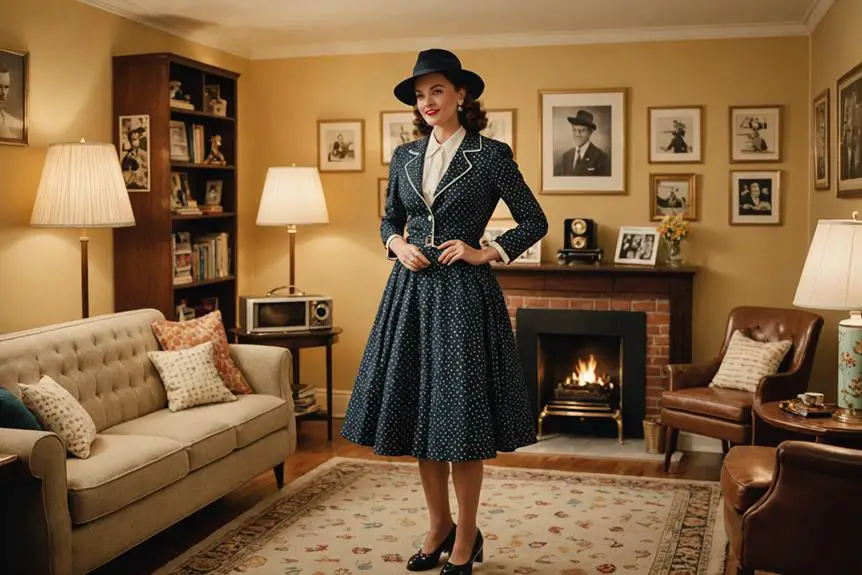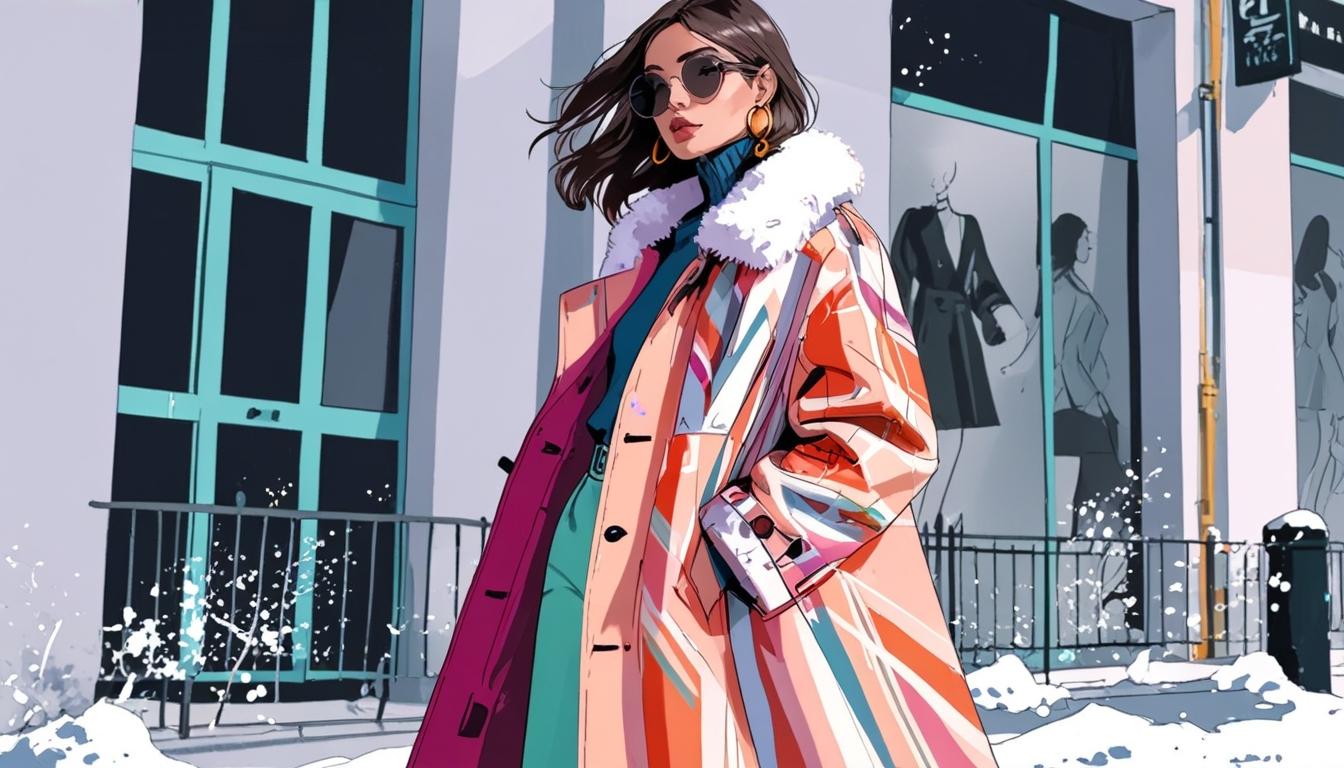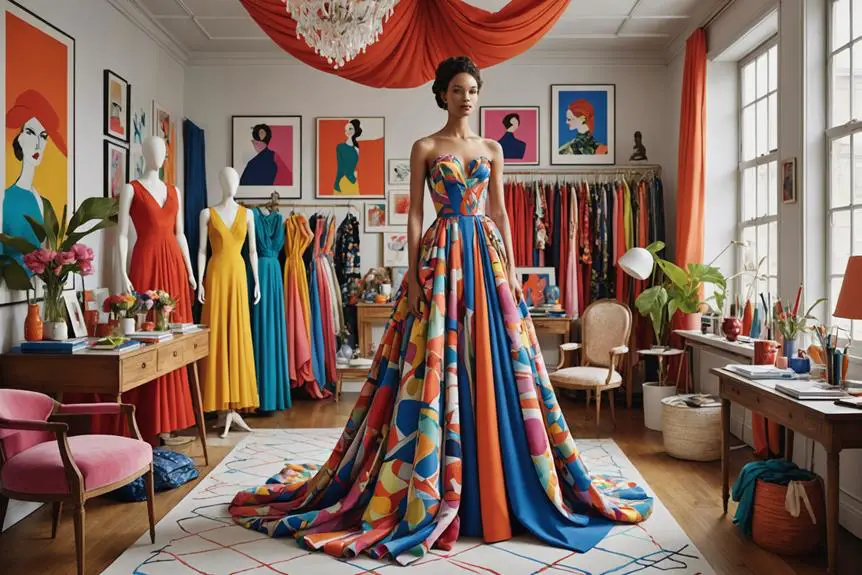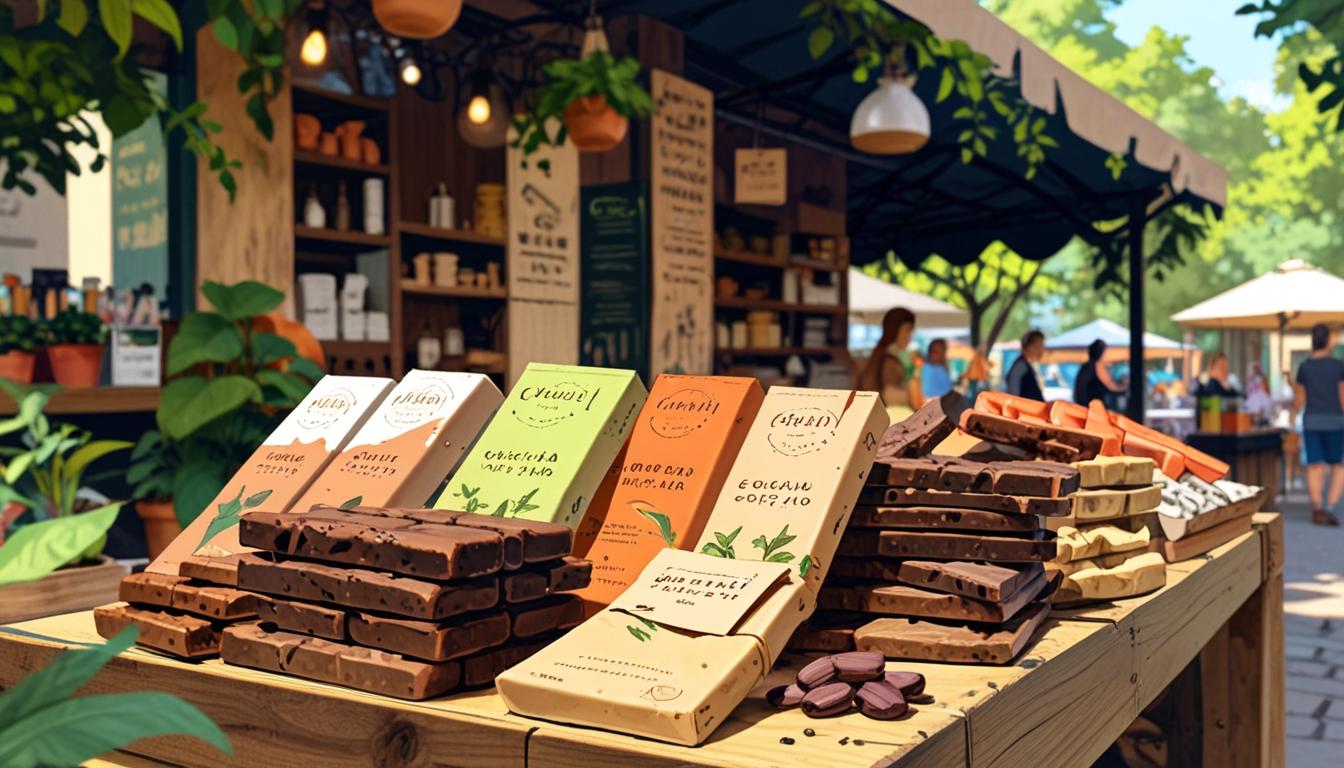When you think about "The Fabelmans," the first thing that might come to mind isn't just the story, but the striking outfits that define its characters. Mark Bridges, the costume designer, uses clothing to convey deeper emotional layers and historical context, pulling you into the 1950s and 1960s. Each character's wardrobe tells a story of its own, blending personal history with broader themes of nostalgia. But what happens when you examine these choices more closely? You might just uncover hidden meanings and unexpected connections that elevate the film's narrative.
Overview of The Fabelmans
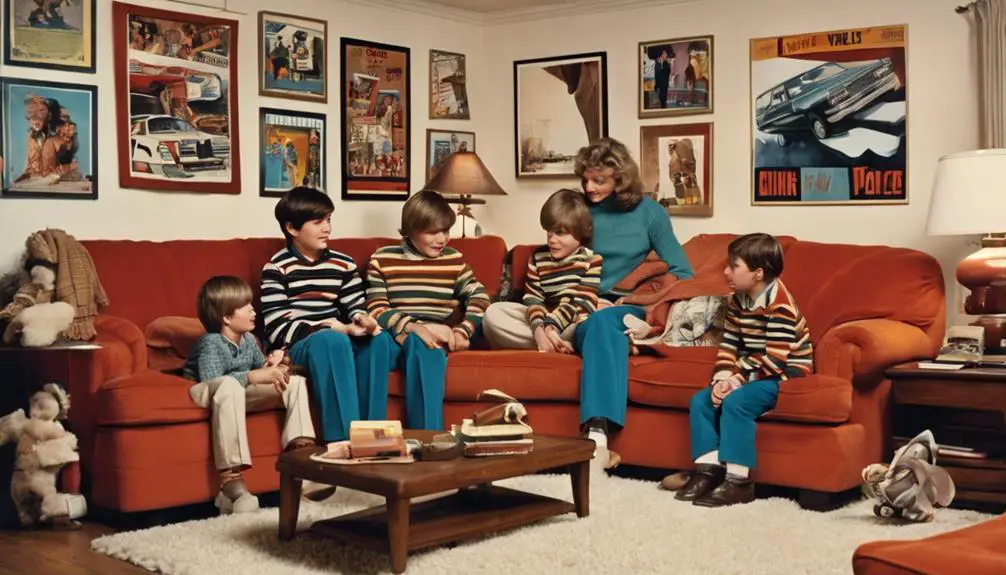
Exploring the heart of creativity and family, "The Fabelmans" is a semi-autobiographical film directed by Steven Spielberg that investigates his personal journey as a filmmaker. The narrative centers around Sammy Fabelman, a character who embodies Spielberg's aspirations and struggles while maneuvering through the complexities of his family dynamics. The film beautifully captures the essence of what it means to grow up in an artistic household, showcasing the influences that shaped Sammy into the filmmaker he becomes.
At the core of the film is Mitzi Fabelman, Sammy's mother, whose character draws inspiration from Spielberg's real-life mother, Leah Adler. Through her, we see the emotional depth and rich storytelling that Spielberg infuses into the narrative. The costumes play a significant role in conveying this familial connection, and that's where Oscar-winning costume designer Mark Bridges comes in. He meticulously researched the Spielberg family history to create authentic attire that resonates with viewers, ensuring that every outfit tells a story.
As you watch, you'll notice how the costumes reflect the era and lived experiences of the Spielbergs, enhancing the film's authenticity. The emotional weight of the film is heightened by these visual elements, reminding us that clothing can be a powerful storytelling tool. Overall, "The Fabelmans" is a heartfelt exploration of creativity, family, and the delicate threads that bind them together, making it a must-see for anyone interested in the art of filmmaking.
Role of Costume Designer
Costume designer Mark Bridges plays a pivotal role in bringing the world of "The Fabelmans" to life through clothing that resonates with authenticity and personal significance. His meticulous attention to detail guarantees that each costume reflects the unique personal style of Steven Spielberg's family, creating a visual narrative that enhances the film's emotional depth. By diving into family photos and home movies, Bridges captures the essence of Spielberg's parents, Mitzi and Burt Fabelman, in a way that feels genuine and heartfelt.
Bridges established a close working relationship with Spielberg, discussing personal anecdotes and family history to inform his designs. This collaboration allowed him to incorporate specific items from Spielberg's actual family wardrobe, such as Mitzi's stunning Mexican wedding dress and Burt's distinctive bolo tie. These details not only pay homage to Spielberg's heritage but also ground the film in a rich, relatable context.
In addition to authentic representations, Bridges cleverly embedded subtle Easter eggs within the costumes. These thoughtful touches, like turquoise earrings and a bolo tie featuring a scorpion, resonate deeply with Spielberg and his sisters, adding layers of personal significance to the designs. This approach not only enriches the visual storytelling but also connects audiences to the heartfelt memories that inspired "The Fabelmans." Ultimately, Mark Bridges' work as a costume designer transcends mere clothing; it weaves together the threads of family, history, and emotion, creating a tapestry that audiences can truly feel.
Research and Inspirations
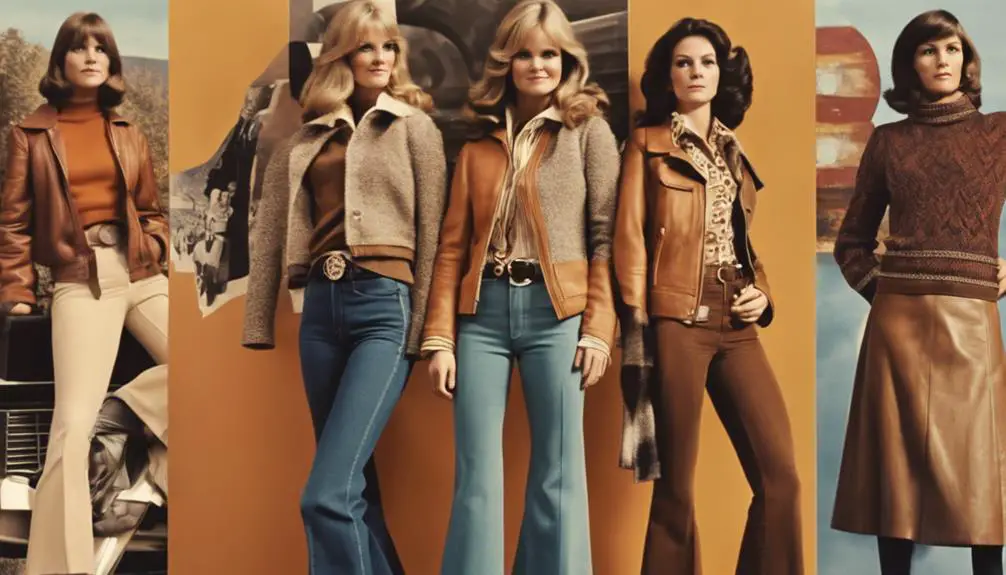
Mark Bridges' dedication to authenticity shines through in his research and inspirations for *The Fabelmans*. He meticulously examined 8-millimeter family films and photographs, immersing himself in the visual history of the era to guarantee that every piece of clothing resonated with the true essence of the characters' lives. One of his primary focuses was capturing the unique personal style of Steven Spielberg's mother, Mitzi. By selecting specific garments like Mexican wedding dresses and ethnic jewelry, he brought her vibrant spirit to life on screen.
Bridges didn't stop at just visuals — he engaged in conversations with Spielberg's sisters to gain deeper insights into family fashion and preferences, enriching the authenticity of the costumes. This collaboration helped him understand how clothing choices reflected their personalities and familial bonds, which is key in a film centered on family dynamics.
To portray the fashion trends of the 1950s and 1960s, he thoughtfully incorporated elements like pearls and Peter Pan collars, blending historical accuracy with character development. Each outfit was designed not only to reflect the period but also to enhance the storytelling. The design process required a careful balancing act between historical fidelity and the cinematic needs of the film. For instance, the streamlined designs of earrings guaranteed that the focus remained on character performances, allowing the audience to connect deeply with their stories. Bridges' commitment to authenticity truly enriches the visual experience of *The Fabelmans*.
Character Costume Details
Costumes in *The Fabelmans* play an essential role in conveying the essence of each character and their relationships. Take Mitzi Fabelman, for instance; her costumes beautifully reflect her cultural background and personal style, heavily influenced by Spielberg's mother. You'll notice her wearing Mexican wedding dresses and ethnic jewelry, which add depth to her character, showcasing her vibrant spirit and individuality.
On the other hand, Burt Fabelman's attire, featuring short-sleeved dress shirts and bolo ties, channels the 1960s businessman aesthetic inspired by Spielberg's father. This choice not only grounds Burt's character in the era but also highlights his role within the family dynamic, contrasting sharply with Mitzi's vibrant looks.
Then there's Sammy Fabelman, whose red plaid shirt and white trousers symbolize his aspirations as a budding filmmaker. His costumes resonate with youthful ambition, reflecting the creative journey he initiates throughout the film.
Additionally, the character of Benny showcases a different style that further illustrates family dynamics and personal relationships, emphasizing how varied approaches to life affect interactions within the family. Specific garments, like Mitzi's flannel nightgown and Sammy's filmmaking costumes, draw directly from Spielberg's childhood experiences, enhancing the film's authenticity.
Every costume choice is intentional, allowing you to connect more deeply with the characters and their stories, making *The Fabelmans* a visually compelling exploration of family and creativity.
Themes of Memory and Impact
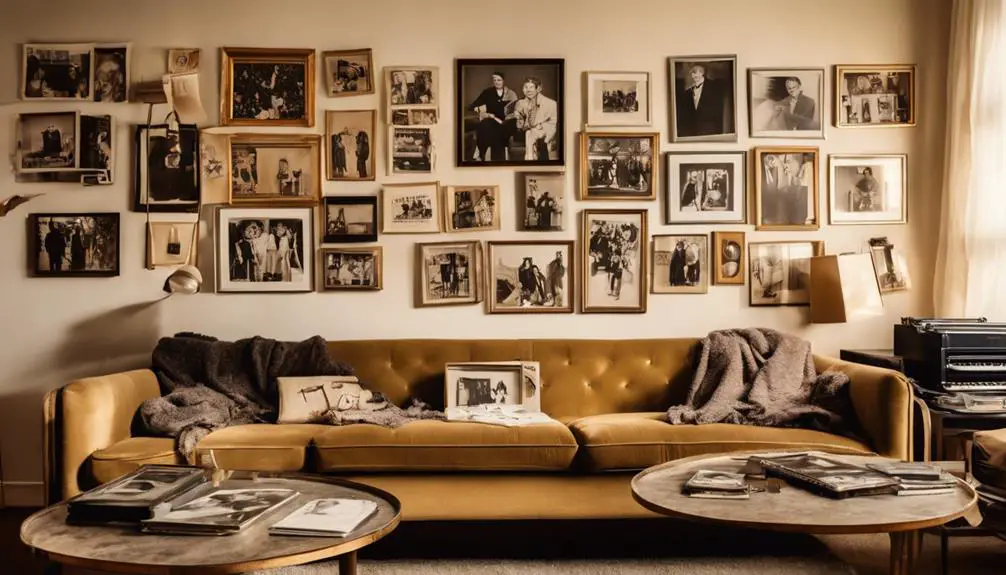
Memory plays a pivotal role in *The Fabelmans*, where the film's costumes serve as visual reminders of the past. Set against the backdrop of the early 1950s to early 1960s, these garments not only reflect period accuracy but also dive deep into personal memory, highlighting Spielberg's family history. You'll notice how Uncle Boris, dressed in a 1940s suit, captures the essence of nostalgia and the distortion that often accompanies family recollections. His attire evokes a specific time and place, blending reality with the warmth of cherished memories.
The bright colors and clean imagery of the costumes enrich Spielberg's nostalgic view of his childhood, enhancing the emotional depth of the narrative. Each costume acts as a highly personal element, embodying familial heritage and honoring Spielberg's legacy through visual storytelling. You can almost feel the connection to the past with every outfit, as they resonate with personal history.
Garments like gaudy jewelry and maroon suits draw inspiration from actual family photographs, further rooting the film's themes in authentic memory. By weaving these elements into the fabric of the story, the costumes transcend mere clothing; they transform into powerful symbols of love, loss, and the intricate tapestry of family life. So, as you watch, take a moment to appreciate how these costumes not only tell a story but also invite you to reflect on your own memories, making *The Fabelmans* a heartfelt exploration of nostalgia and impact.
Easter Eggs in Costumes
Hidden treasures abound in the costume design of *The Fabelmans*, where subtle details serve as heartfelt tributes to Spielberg's family history. Costume designer Mark Bridges expertly weaves personal history into the film's wardrobe, creating Easter eggs that resonate with both Spielberg and his sisters. These thoughtful touches enrich the authenticity of the visual storytelling, making each outfit not just a piece of clothing but a connection to the past.
For instance, you'll notice characters adorned with striking turquoise jewelry, a nod to Spielberg's mother, while the bolo ties worn by key figures reflect his father's distinctive style. One particularly notable bolo tie features a scorpion embedded in lucite, a unique element that Bridges personally owned. This detail adds an intriguing layer to the character's attire, showcasing how Bridges incorporates his own personal history into the costumes.
Every choice in the costume design is intentional, enhancing the viewer's experience while remaining seamlessly integrated into the narrative. These Easter eggs aren't just for show—they're designed for recognition by Spielberg and his family, inviting them to see their own stories reflected in the film. As you watch *The Fabelmans*, pay close attention to these intricate details; they serve as affectionate reminders of how deeply intertwined personal history and character design can be, drawing you even closer to the heart of this poignant story.
Challenges in Costume Selection
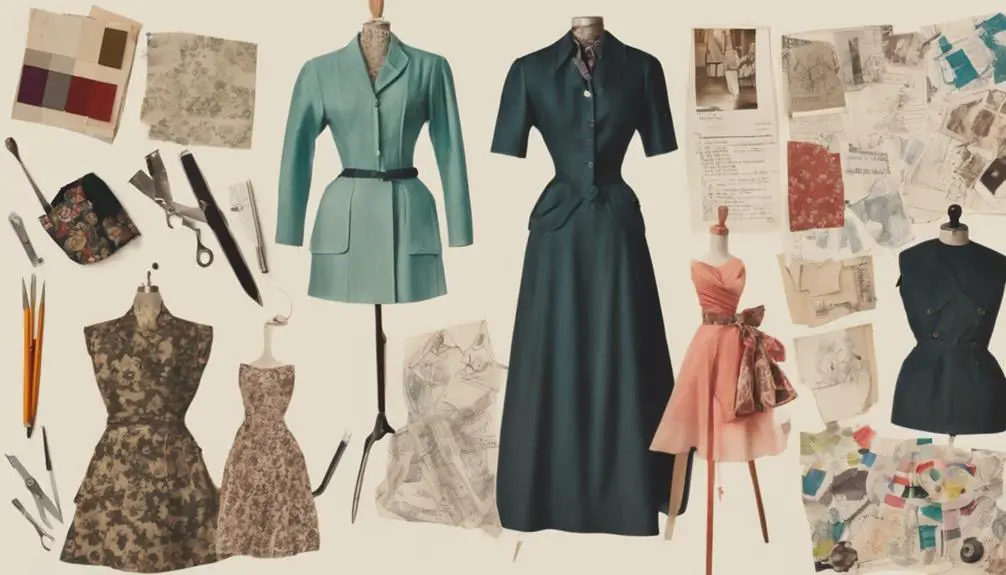
Selecting costumes for *The Fabelmans* posed significant challenges that required a delicate balance between authenticity and cinematic appeal. The team faced the formidable task of sourcing authentic vintage items that aligned with the film's overall aesthetic and emotional tone while ensuring they remained visually engaging. For instance, original earrings from Steven Spielberg's mother were deemed non-photogenic, which led to a creative pivot toward inspired designs that enhanced the visual narrative.
Mark Bridges, the costume designer, emphasized the importance of creating a cohesive look that reflected the resourcefulness of young filmmakers in the 1960s. This meant streamlining designs to keep the focus on performances, which is essential in storytelling. The challenges didn't stop there; the crew needed to find costumes that authentically represented the era without overshadowing the characters' journeys.
Moreover, the use of low-tech methods for creating these costumes mirrored Spielberg's childhood experiences and filmmaking processes, adding layers of authenticity to the overall project. Each choice made in the costume selection process was critical in crafting a visually rich narrative, capturing the essence of a bygone era while resonating with audiences today.
Ultimately, the balance between authenticity and cinematic appeal became a defining feature of *The Fabelmans*, showcasing the dedication and creativity that went into overcoming these challenges. The result is a vivid portrayal of a significant time in filmmaking history that invites viewers to connect with both the characters and their stories.
Frequently Asked Questions
How Did the Costumes Influence Audience Perception of the Characters?
Costumes shape character symbolism and influence audience empathy. As you observe costume evolution, it enhances visual storytelling and reinforces historical accuracy, helping you connect more deeply with the characters and their journeys throughout the narrative.
Were Any Costumes Inspired by Real-Life Events or People?
Costumes are the brushstrokes of storytelling. You'll find historical accuracy and character symbolism woven into the designs, reflecting evolution through cultural references and personal anecdotes, revealing deeper connections to real-life events and people.
What Materials Were Primarily Used in the Costume Design?
In costume design, you'll notice fabric choices are essential for historical accuracy. You tackle design challenges to guarantee period authenticity, while also considering character development, creating a believable connection between the costumes and the story.
How Did the Color Choices Reflect the Film's Emotional Tone?
You've got to love how color symbolism transforms scenes! The hues enhance emotional resonance, guiding visual storytelling. Each shade deepens character development and adds thematic depth, making you feel all the feels throughout the film.
Were There Any Notable Costume Design Collaborations for the Film?
You'll find notable costume designer collaborations that emphasize historical accuracy and period authenticity. Influences from celebrities enhance visual storytelling, ensuring the film's costumes resonate with audiences while accurately representing the era's aesthetics and emotions.
